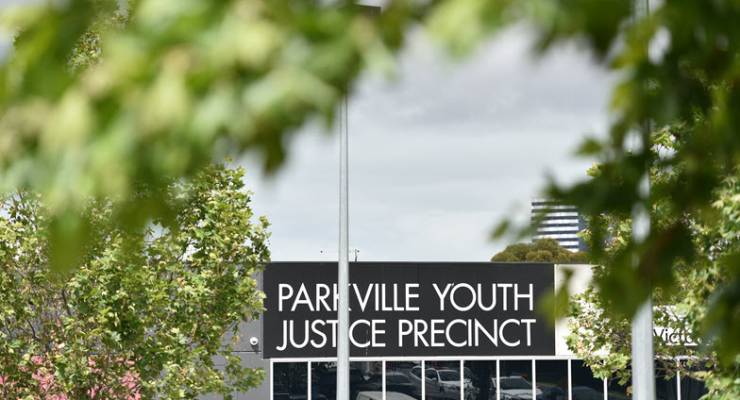
While the focus on so-called “African gangs” dominated media in the new year, incidents of youth crime in Victoria are actually decreasing across all measures.
The Sentencing Advisory Council recently reported that between 2010 and 2015 the number of children sentenced in the Children’s Court has decreased by 43%. Despite these statistics – which were published in a Victorian government report in last year – one would be forgiven for assuming that Victoria was about to be overrun by child criminals in some kind of suburban Lord of the Flies scenario.
However, a further analysis of the statistics demonstrates an even more worrying trend – the serious nature of mental health in children and young people in detention.
A recent Victoria Youth Parole Board report cited a staggering 71% of children and young people surveyed had been victims of abuse, trauma or neglect. The report also confirmed that 40% of youth detainees presented with mental health issues, while 22% had a history of self-harm and suicidal ideation.
The Victorian government’s response to this obvious mental health crisis? To build a brand new, $228 million, high security youth prison, two kilometres from the Werribee rubbish tip.
Despite the Andrew’s government claiming the facility to be “fit for purpose”, the proposed 224 bed prison will house just 12 beds for mental health patients, despite the overwhelming numbers of children and young people suffering from trauma, abuse and poor mental health. This new prison, named “Cherry Creek”, is certainly not fit-for-purpose as the government claims, and demonstrates the government’s willingness to pander to media fearmongering as opposed to acting upon the stark evidence of its own judiciary and government departments.
The constant hype around youth justice also masks a far more serious and escalating crisis of ever-increasing numbers of incarcerated Aboriginal and Torres Strait Islander women, the fastest growing cohort of prisoners in Australia. A recent report released by the Human Rights Law Centre stated that since the Royal Commission into Aboriginal Deaths in Custody, the imprisonment rate of Aboriginal and Torres Strait Islander women has increased by 148%. Like children and young people in prison, Aboriginal and Torres Strait Islander women also suffer from poor mental health, homelessness, abuse and trauma, are victims of family violence, and have often had their children removed from them.
The Victorian Government’s response to this crisis has simply been to expand the Dame Phyllis Frost Centre women’s prison to facilitate an additional 132 prisoners, despite repeated calls from the Aboriginal community to build a therapeutic facility based on cultural values. Wulgunggo Ngalu Learning Place is such a facility for Aboriginal men. Set in the bushland of Gunnai Kurnai country in eastern Victoria, Wulgunggo Ngalu is a successful, culturally grounded facility aimed at assisting Aboriginal men to complete corrections orders.
Many leaders in the Victorian Aboriginal community have questioned why such facilities cannot be built for the most vulnerable in our society — women and children. The Human Rights Law Centre report said that too often, the high incarceration of Aboriginal and Torres Strait Islander women is overshadowed by debate about male incarceration, and in Victoria, youth justice issues.
However, implementation of mental health programs and the funding of therapeutic facilities is proven to have better outcomes and reduce reoffending. The Youth Affairs Council of Victoria state that while only 40% of young offenders placed in detention will not reoffend in the two years after being released, diversion and other community based programs have success rates of up to 88% of non-reoffending.
The Victorian Ombudsman also acknowledged the clear link between incarceration and high recidivism rates for adult prisoners.
Yet instead of addressing the clear mental health and social inequalities underpinning offending, a push to incarcerate more people, for longer periods of time only creates more victims; victims in the community due to increased reoffending, and victims of vulnerable women, children and young people subjected to a punitive justice system.
Coming into an election year in Victoria, however, instead of acting with common sense and compassion, the inevitable race to the bottom in the law and order debate has already begun.








Why import troubled people, it is not Australian action or inaction’s that traumatized Africans, its their own people.
Its a waste of $ to build prisons, and even bigger waste to bring damaged people here to be supported by the tax payer.
Over populated countries in Africa should be left to famine and war as they traditionally always have.
Yeah, great mate. Same for all the blokes who came traumatised form war torn Europe and the Jewish ghettos then. Oh crap they were white. How the hell do you think Africa got like it is? Anything to do with the scumbag American and European arms dealers? Maybe the colonial governments who stole the resources and ruined the traditional food economy? A good many famines in this world were created by colonial governments. Think India in the 40s, Ireland in 1847. You talk about tradition, but you have no grasp of the history to support your arguments.
The best thin is always to prevent the crime. The problem that sees so many indigenous kids locked up is that they commit crimes. There is very little energy applied to preventing this with better targeting of resources, support for communities and getting the hope into the parents. I live with this every working day.
Alister McKeach is right on here. I guess the common response here is to blame the messengers of these rubbish storylines, such as the herald-sun… but there is also a strong role for government leadership in this kind of discussion. Calling it out as often and clearly as required, correcting the reports that make some people ready to believe the stories because of their own concerns about public safety. There’s a statistic out there that shows we are more likely to be run over by a bike than beaten up by a ‘juvenile delinquent’…and so on. Its time to condemn what this is – a racist taunt that is becoming more prevalent – including in the national parliament!